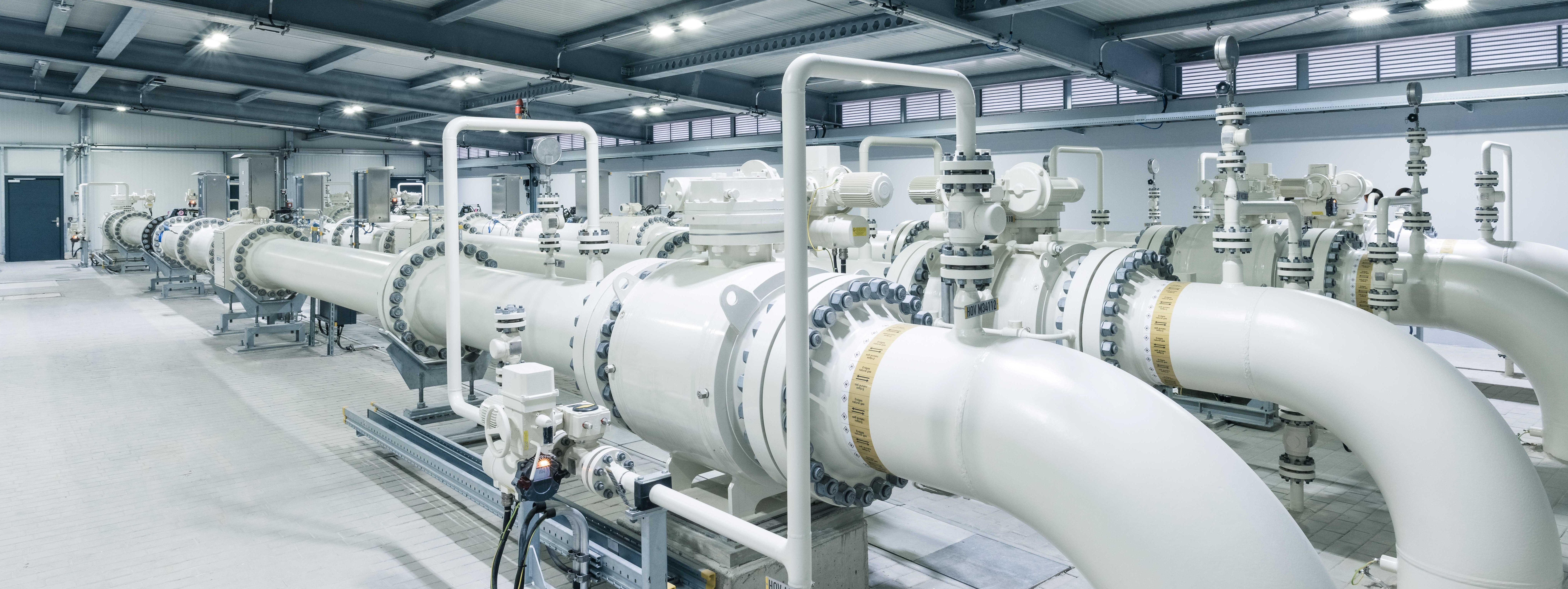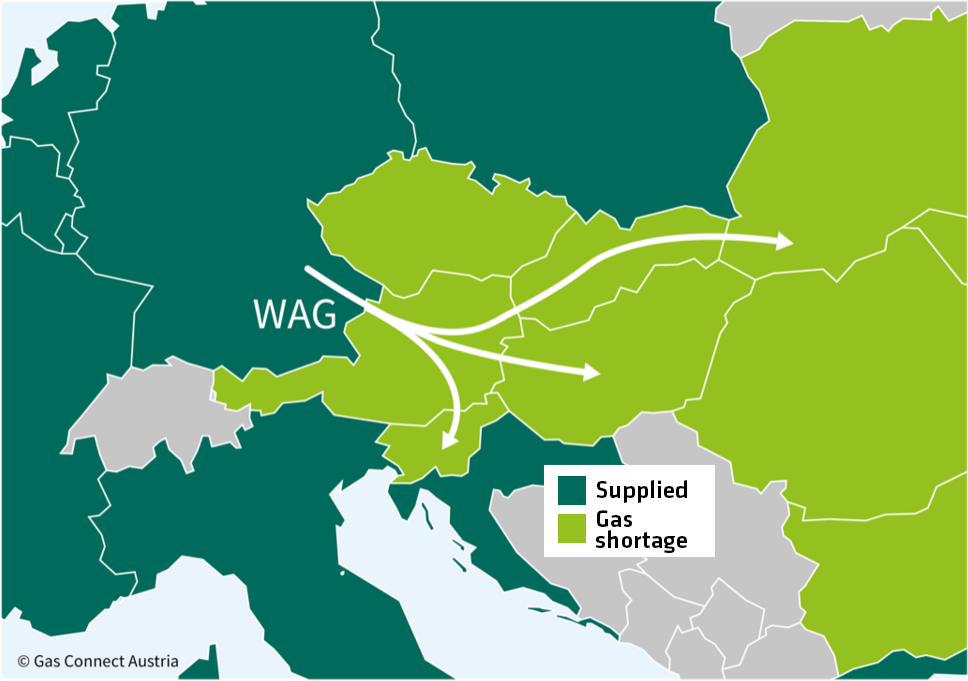
WAG Loop 1: Ensuring Austria’s security of supply and its neighbouring countries
The West Austria Gas Pipeline (WAG) is one of the most important natural gas pipelines in Austria. As part of the "WAG Loop 1" project, the section between Oberkappel and Bad Leonfelden is being expanded with a parallel pipeline stretch of 40 kilometers. This investment is crucial to strengthen security of supply and to ensure that, following the discontinuation of gas deliveries via Ukraine, more gas can flow to Austria from the West in the future.

Expansion needed for security of supply
The ongoing geopolitical tensions and the expiry of the gas transit agreement between Russia and Ukraine at the end of 2024 highlight the risk of gas supply shortages in extreme situations – both for Austria and the broader Southeast European region. The swift and determined expansion of the WAG pipeline in the west-to-east direction is therefore becoming increasingly important to ensure the long-term energy supply for households, businesses, and industry. It enables improved access to gas sources from Northwestern Europe – such as Norway – as well as to LNG, which is delivered via terminals along the coasts of Germany, Belgium, the Netherlands, and France. Moreover, the project also opens up prospects for a carbon-neutral future, as the pipeline will be suitable for transporting climate-friendly hydrogen in the future.

Limited reverse flow operation
The WAG was initially optimised for east-west gas transport. This involved laying a parallel pipeline after the compressor stations, but not along the entire length. As a result, the capacity of the pipeline in the reverse direction (from west to east) is much lower than in the original east-west flow direction. Over the years, however, there has been an increasing demand for transportation from west to east.
With the war in Ukraine in 2022, the reverse flow compressors reached their limits as they were operated close to capacity to fill storage tanks and compensate for lost volumes from Russia. Operating a pipeline in reverse flow is inefficient, like driving a car in reverse. The gradual expansion of the WAG is essential to increase the much-needed transport capacity for west-east operations. This increase in capacity will also provide more flexibility in feeding in and out of the Haidach and Seven Fields gas storage facilities in Upper Austria.
A project designed for the energy transition
The expansion of the WAG will facilitate the transport of larger volumes of Green Hydrogen in the coming years. This includes efforts such as the “SouthH2Corridor” project. There are also plans to transport natural gas and hydrogen simultaneously through the network using a parallel pipeline system.
Integrated into the blueprint of a European hydrogen grid, the WAG Loop serves as the cornerstone for the envisioned transport routes in the European Hydrogen Backbone. This means that industries in Austria, such as those in the Linz region or the Schwechat refinery, stand to benefit from a renewable energy supply.

Government funding for WAG Loop 1
As part of the Council of Ministers, financial support for the WAG Loop 1 project by the federal government was announced in March 2024, and partial funding of 70 million euros was approved by the National Council on July 3, 2024. The transmission system operator responsible for the project, Gas Connect Austria welcomes this decision.
With the provision of up to 70 million euros in funding, part of the total project costs will be covered. The state funds will be repaid to the government by Gas Connect Austria once they have been recouped.
Additional details on WAG Loop 1 are available in our project folder, under project status and Q&A as well as in our graphics.
